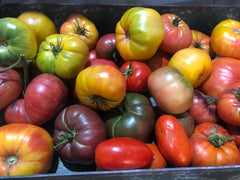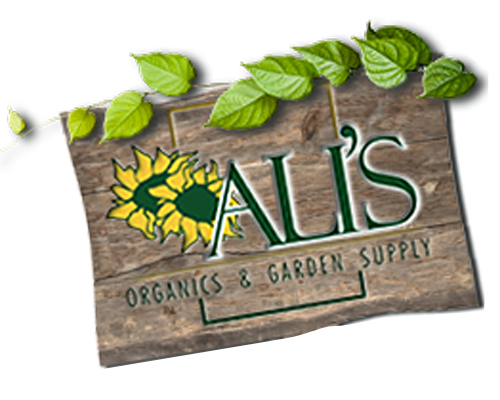Tomato Growing Guide
Posted April 10, 2023

Tomatoes are probably the most widely used vegetable for cooking and of course a favorite for slicing and eating fresh. It is worth growing a few, either in the garden or even in grow bags.
Planting tomatoes should be planted after your last average frost free date unless you are protecting them from frost damage with frost blanket, upside down buckets or water cell protectors.
Tomato varieties can really make a huge difference in production and flavor. If you don’t have a lot of room to grow tomatoes, it might be a good idea to ask nearby gardeners what their favorite varieties are for growing and keep in mind what you plan on doing with your tomatoes. Eating, bottling, making salsa or sauce? There are so many choice of tomatoes and so many flavors to choose from. I like to grow heirlooms for their full flavor and I love the different shapes, colors and sizes, but I will always add some regular red tomatoes for production to bottle and paste tomatoes for making sauce.
Tomatoes like humus-rich soil. Incorporate plenty of compost into the soil deeply to improve the soil structure and drainage. Work potassium into the soil. Potassium will maximize flowering, which of course means more tomatoes! Potassium also help with plant stresses, such as high and low temperatures. Good choice of potassium are Greensand or Langbeinite. Wood Ash can be used, but only if your soils pH is below 6.5.
Calcium is also helpful to add to your soil before planting tomatoes. Gypsum, Garden Lime or Oyster shell will provide a good amount. Calcium enhances pollen germination and influences the growth and health of cells and conductive tissues. Work calcium in the soil deeply with the compost.
Nitrogen is also needed, but only in small amounts and in the beginning of planting. When added to garden soil at or just before planting, tomato plants can get off to a good start, get a healthy growth, which is what we want. But we don’t want to continue to feed nitrogen after the initial application or the tomato plants will produce more leafy green and not produce buds.
Phosphorus is needed for buds to produce and support fruiting. It also stimulates root growth and tomatoes have an extensive root system.
Fish Bone Meal or Bone Meal provides the right amount of nitrogen and phosphorus for tomato plants to be healthy and productive. Add 5 pounds per 100 sq ft of planting space or 1/2 per 5 gallon size planter. Work this in the top 2-3 inches of planting soil.
When planting your tomatoes, go deep in hot climates. Remove the lower leaves and plant up to the last 4-6 leaves. In mild summer climates, plant your tomato sideways in a trench up to the last 4-6 leaves.
Keep your tomatoes soil evenly moist. Use your finger as a guide by feeling the soil 2” below the surface. The surface can dry out, but below should stay slightly moist, but never soggy. If the soil dries out and gets heavily watered and dries out again, this water fluctuations can cause blossom end rot (BER).
Water in the mornings and try to avoid overhead watering to prevent soil borne diseases from splashing back up on the undersides of the leaves which can cause early blight.
Mulch your tomatoes to keep weeds out, moisture in and the root system cooler.
Red mulch, or red plastic can encourage a heavier set of fruit.
Feeding a liquid bloom fertilizer during the growing season can sprayed on the foliage of tomato plants as well as a root drench to help encourage blossom set and a healthy plant. Spray plants every week to 10 days till about 6 weeks before your first freeze.



Comments (0 Comments)
There are no comments.
Post Comment